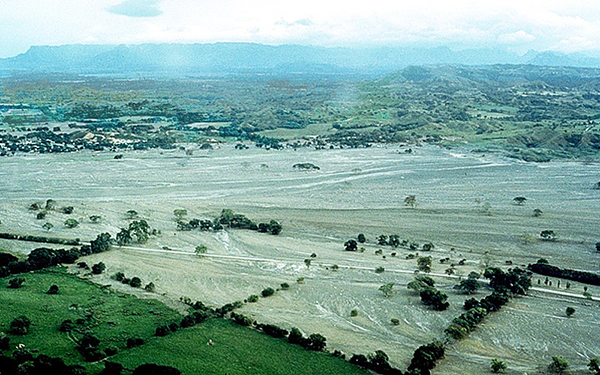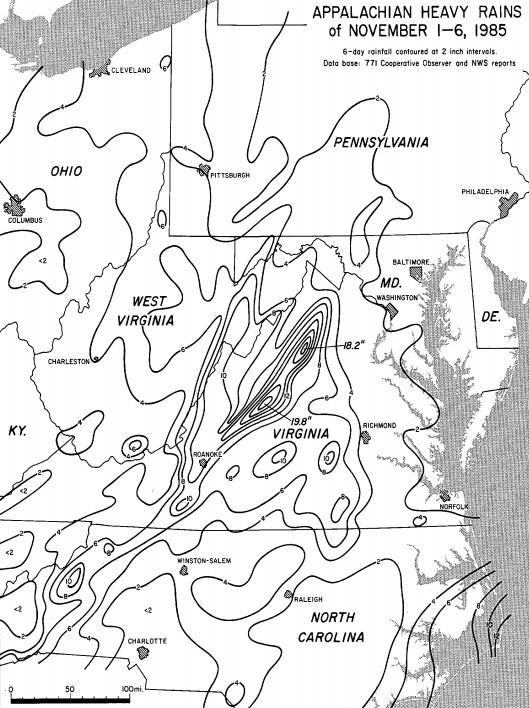
by Timothy Oleson Wednesday, October 21, 2015

If you’ve been on the Internet in the last day or two, the odds are good you’ve heard that today, Oct. 21, 2015, is Back to the Future Day. (If not, just start typing ‘b’ … ‘a’ … ‘c’ … into your search bar and see how long it takes before something comes up.)
In other words, today is the day to which Marty McFly — a feisty ‘80s teenager (played by Michael J. Fox) from fictional Hill Valley, Calif. — time-traveled from 1985, courtesy of Doc Brown’s ingenious, “flux capacitor”-powered (though sadly also fictional) DeLorean DMC-12 in the 1989 film, “Back to the Future 2.” It may not sound like much of an occasion to commemorate, but hey, in the realm of movie franchises, “Back to the Future” was a pretty formative piece of American pop culture for some of us — right up there with other heavyweights of the era like “Indiana Jones,” “Rocky” and several others.
In any event, the heaping pile of “BTTF” nostalgia that’s going around got me pondering a few topics that geoscientists might (or might not) have been thinking about in 1985. Bear in mind that at the time, my interactions with geoscience were limited mostly to playing with toy trucks in the dirt (soil science), hiking over shoreline boulders (uh, petrology?), and watching the Dinobots on Saturday mornings (paleontology, obviously), so this is an incomplete, arbitrary and somewhat U.S.-centric, list at best. But here goes…

The former site of the Colombian town of Armero sits in the center of this image. The town was obliterated by a massive lahar resulting from the Nov. 13, 1985, eruption of Nevado del Ruiz. Credit: Jeffrey Marso, U.S. Geological Survey
1) Volcanic Eruptions
The 1980 eruption of Mount St. Helens, though a few years in the rear-view mirror, must’ve still been very present on the minds of many geoscientists. For one thing, bursts of eruptive activity at the volcano continued into the middle of the decade, with lahars occasionally accompanying blasts of steam and debris. And of course, numerous researchers — from seismologists and volcanologists to biogeochemists and ecologists — had, by this time, begun taking advantage of the opportunity and natural laboratory the eruption provided to study its effects.
Not long after the first “Back to the Future” film opened in theaters on July 3, 1985 — though there were signs of unrest beginning in late 1984 — another large eruption would capture the attention of scientists and the world. On Nov. 13, 1985, Nevado del Ruiz, a stratovolcano in the Colombian Andes erupted violently, sending a massive lahar down the River Lagunillas that obliterated the town of Amero and killed an estimated 23,000 people.
2) Damaging Earthquakes
A pair of magnitude-8 earthquakes — one off the coast of Chile near Valparaiso on March 3 and the other near Michoacan, Mexico, on Sept. 19 — were the largest in 1985 in terms of magnitude; both were followed by at least one aftershock greater than magnitude-7. The Chilean quake killed at least 177 people and injured more than 2,500, mostly in the towns of Valparaiso, San Antonio, Vina del Mar and Santiago. The Mexican earthquake, which caused extensive damage in and around Mexico City, claimed at least 9,500 lives (though the toll may have been much higher, according to the U.S. Geological Survey), injured about 30,000 and left more than 100,000 without homes. It was reportedly felt by people as far away as Texas.
Although Arctic sea-ice extent has been declining since about the late 1970s, in 1985, it was not on the minds of the public or the geoscience community at large to nearly the degree it is now. (Of course, the broader issue of climate change was indeed already on the minds of many researchers, but still fewer than today.) Regular satellite observations had only begun six years earlier, and the trend in the sea-ice data that has become abundantly apparent in recent years was not so obvious. On July 3, 1985, BTTF’s release date, Arctic sea ice covered 11.15 million square kilometers, and the annual minimum extent that year, which occurred on Sept. 11, was 6.49 million square kilometers, according to the National Snow and Ice Data Center. This year sea ice covered 9.94 million square kilometers on July 3, and at its minimum, coincidentally also on Sept. 11, it covered just 4.41 million square kilometers — the fourth lowest annual minimum since 1979.
4) Hefty Hurricane Season
OK, so maybe this is more weather than geology, but meteorology is an earth science, so I think it counts. Besides, 1985 was a big year for tropical storms in the U.S., so it’s hard to ignore. That year, six Atlantic hurricanes — along with five additional named storms — made landfall in the country, the highest single-year total since 1886. Bob hit first in late July, followed by Claudette and Danny in mid-August; all were category-1 hurricanes. Category-3 Elena made landfall near Biloxi, Miss., later that month. Gloria, which reached category 4 while still over the ocean, briefly hit Hatteras Island, N.C. as a category-2 storm on Sept. 27 before weakening slightly and making landfall again on New York’s Long Island later that day. Category-1 Juan arrived about a month later, making landfall a couple times in Louisiana before moving farther inland. Finally, category-3 Kate hit Mexico Beach on the Florida panhandle on Nov. 21 before cutting back across the southeast and departing into the Atlantic. 1985 was also a heavy year for tropical storms in the Pacific, with 13 hurricanes and 11 other named storms. Only one, however, made landfall: Hurricane Waldo hit northwestern Mexico in October.

Parts of the Mid-Atlantic experience severe flooding as a result of high rainfall between Nov. 1 and Nov. 6, 1985, which resulted from the remnants of Hurricane Juan. Credit: National Climatic Data Center
As with most tropical storms, the hurricanes of 1985 produced heavy flooding and damage locally. Perhaps most damaging were the so-called Election Day floods that saturated parts of the Mid-Atlantic, particularly West Virginia and Virginia, in early November after the remnants of Hurricane Juan traveled north. Although unrelated to any tropical cyclone, Cheyenne, Wyo., also experienced some of the worst flooding in its history in August 1985 as a result of severe thunderstorms.
5) In the Literature
Bit of a wild card here, but I thought I’d try to find some of the studies that made waves in 1985, as judged from some (very) arbitrary literature searches and Google citation counts. Something tells me I am missing a few, though, so feel free to let me know of others.
B.C. Burchfiel and L.H. Royden, 1985, “North-south extension within the convergent Himalayan region," Geology, 13, 679.
D.J. DePaolo and B.L. Ingram, 1985, “High-resolution stratigraphy with strontium isotopes," Science, 227, 938.
J.-L. Lin et al., 1985, “Preliminary Phanerozoic polar wander paths for the North and South China blocks," Nature, 313, 444.
M. Mattauer et al., 1985, “Tectonics of the Qinling Belt: build-up and evolution of eastern Asia,” Nature, 317, 496.
W.M. White, 1985, “Sources of oceanic basalts: Radiogenic isotopic evidence," Geology, 13, 115.
So, do these ring any bells?
A replica of "Sue" the T. Rex's iconic skull on display at Chicago's Field Museum. Credit: ScottRobertAnselmo, CC BY-SA 3.0
A couple more random thoughts …
In 1985, “Sue” the T. Rex, one of the most well-known and beloved fossil animals, who now holds court at Chicago’s Field Museum, hadn’t been found yet. Named for paleontologist Sue Hendrickson, who first noticed portions of the remarkably preserved specimen sticking out of the soil in South Dakota in 1990, the find set off a lengthy and contentious multi-party battle over the skeleton’s ownership.
Although evidence of the roughly 200-kilometer-wide Chicxulub crater near Mexico’s Yucatán Peninsula had first been found during petroleum exploration efforts in the late ‘70s, and the impact hypothesis for the Cretaceous-Paleogene extinction was detailed in 1980, the link between the crater and the extinction was not explicitly made until 1991.
Well, there must be a million and one other topics that could be mentioned, but I’m about tapped out. Let me hear your thoughts about what was, or wasn’t, on geoscientists radars in 1985. And if it’s been a while since you’ve watched the “Back to the Future” films, perhaps it’s time to fire up the DeLorean!
© 2008-2021. All rights reserved. Any copying, redistribution or retransmission of any of the contents of this service without the expressed written permission of the American Geosciences Institute is expressly prohibited. Click here for all copyright requests.